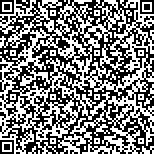| 摘要: |
| 自1999年实施西部大开发以来,国家重视西部贫困地区的经济发展,但部分地区仍然发展缓慢或者返贫现象突出。该文以贵州省“十二五”期间经济和社会发展状况为背景,着重从贵州麻山地区产业结构单一、收入水平低下、劳动力外流、基础设施不完善、经济发展后劲不足等方面分析了贵州麻山地区近几年经济社会发展情况,提出了贫困陷阱,并研究了导致该地区陷入贫困循环陷阱的原因。文章以发展经济学家纳克斯的“贫困恶性循环”、纳尔逊的“低水平均衡陷阱”、缪尔达尔的“循环积累因果理论”为基础,探讨分析了麻山地区存在的4因素贫困循环链,即环境要素制约型贫困陷阱、物质资本因素制约型贫困陷阱、基础设施因素制约型贫困陷阱和人口因素制约型贫困陷阱。文章通过实地调查,结合现有理论基础,提出错综交织的循环链扣是麻山地区难以摆脱贫困的根源。最后,总结了摆脱困境的5条政策性建议。 |
| 关键词: 贫困陷阱贫困循环循环链贫困论贵州麻山地区 |
| DOI:10.7621/cjarrp.1005-9121.20150213 |
| 分类号: |
| 基金项目:西安外国语大学科研基金项目 |
|
| POVERTY TRAPS AND CYCLE OF POVERTY——A CASE STUDY OF MA MOUNTAIN TOWN IN GUIZHOU PROVICE |
|
Wang Liangliang1, Yang Yilei2
|
|
1.School of Business, Xi'an International Studies University, Shaanxi, Xi'an, 710128, China;2.Shenzhen Tecron Safety Co., Ltd,Shenzhen, 518055
|
| Abstract: |
| Since the implementation of the western development of 1999, China pays more attention to economic development in poor areas, but some areas are still developing slowly or returning poverty seriously. Taking the economic and social development of Guizhou Province in "Twelve Five" period as the background, this paper analyzed economic and social development in Guizhou Ma Mountain region in recent years emphatically from the point of the single structure, low income levels, labor migration, inadequate infrastructure, lack of economic development potential, etc., and proposed the poverty trap and its causes. On the basis of economic development experts Ragnar Nurkse's "vicious cycle of poverty," Nelson's "low level equilibrium trap", Myrdal's "cumulative causation model", four factors of poverty cycle chain in Ma Mountain region were discussed in this paper, that was, environmental factors restricting poverty trap type, material capital factors constraining poverty trap type, infrastructure factors constraining poverty trap type and population factors constraining poverty trap type. Through field investigation, combined with the existing theoretical basis, it proposed that interwoven circular chain was the root cause of getting rid of poverty. Finally five policy recommendations were given in this paper. First of all, it should overcome poverty alleviation resistance of financial capital, and expand investment in public goods; Second, to broaden the channels of the rural financial development, and look for more ways to revitalize the private capital; Third, to train new farmers, improve people's quality, and transfer rural surplus labor force and population controlling; Fourth, to implement the "21 Mode", refers to the two cities (developed cities and underdeveloped cities) to establish friend and cooperative relationships based on a same or similar advantages. Finally, to insist on the development of three-dimensional ecological cycle of agriculture for the sustainable development. |
| Key words: poverty trap cycle of poverty chain of poverty |

